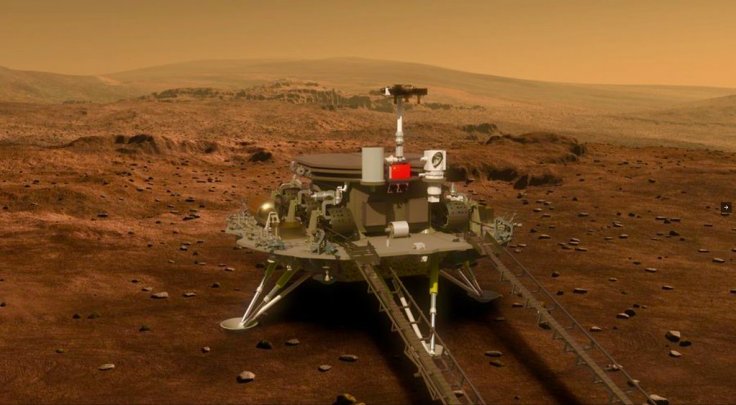China has created history by successfully landing its Zhurong rover on Mars. It has thus become only the second country, after the United States, to have successfully landed a spacecraft on red planet.
The Chinese state media said on Saturday that the six-wheeled Zhurong robot landed accurately at the planned site in the southern part of Utopia Planitia, a vast plain in Mars' northern hemisphere.
The success of the Tianwen-1 mission, China's first interplanetary expedition, was hailed as a big milestone in China's ambitious space program.

The Tianwen-1 mission used a combination of a protective capsule, a parachute and a rocket platform to make the descent, the media said.
The successful completion of the Tianwen-1 mission happened on the 295th day of its journey. Tianwen-1 was was launched via a Long March-5 carrier rocket on July 23, 2020.
Zhurong, which means God of Fire, was launched to the planet's orbit in February. The rover then spent months scanning Utopia and assessing the safest place to land by assessing high-resolution images. The robot weighs around 240kg and is powered by fold-out solar panels.
"The aim with all such ventures is to pick a spot, as far as possible, that is devoid of imposing craters and large boulders," the Global Times wrote, citing scientists.
The Chinese space scientists are looking at getting at least 90 Martian days of service from the Zhurong rover now. A Martian day, or Sol, lasts 24 hours and 39 minutes.

The Tianwen-1 probe lowered its altitude from the Martian parking orbit before its lander-rover combination separated from the orbiter and made a safe landing.
The rover spent around nine minutes decelerating after after entering the Mars atmosphere. Then it hovered a bit longer for obstacle avoidance and cushioning and finally landed on the Utopia Planitia, CNSA said.
"At the hovering stage, the six instruments on board the rover, including microwave sensors to determine speed and distance and optical cameras, were started simultaneously in order to 'search for a safer' spot for the soft landing," said Wang Chuang, the chief director-designer of the Tianwen-1 probe at China Academy of Space Technology (CAST).
"It took an extremely accurate operation of a range of technology, including aerodynamic shape design, parachute and engine, to achieve [the] soft landing on Mars. There is no room for defiance of even one second on any single system," Sun Zezhou, the Tianwen-1 designer-in-chief with the CAST, added.








